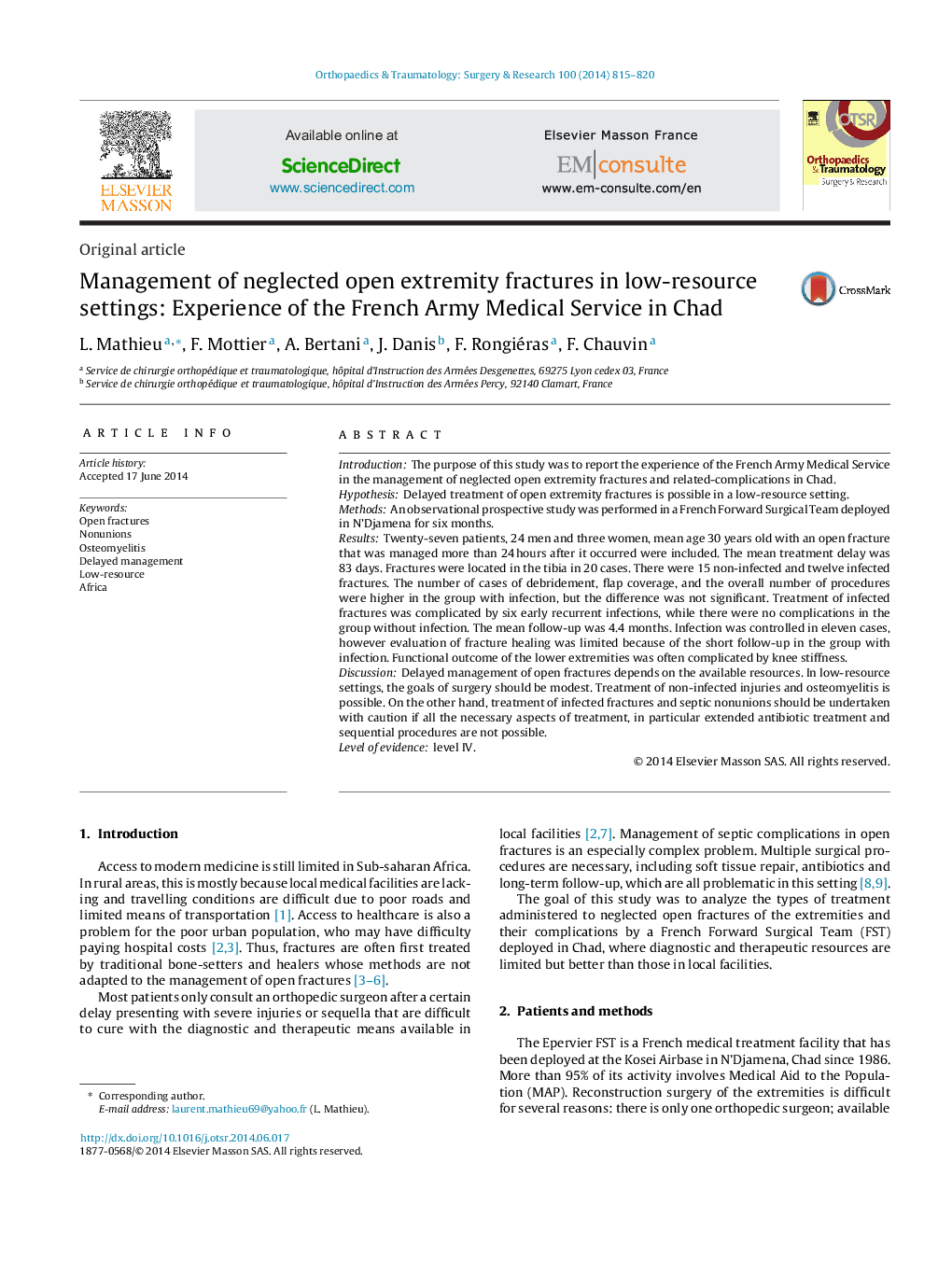| Article ID | Journal | Published Year | Pages | File Type |
|---|---|---|---|---|
| 4081418 | Orthopaedics & Traumatology: Surgery & Research | 2014 | 6 Pages |
IntroductionThe purpose of this study was to report the experience of the French Army Medical Service in the management of neglected open extremity fractures and related-complications in Chad.HypothesisDelayed treatment of open extremity fractures is possible in a low-resource setting.MethodsAn observational prospective study was performed in a French Forward Surgical Team deployed in N’Djamena for six months.ResultsTwenty-seven patients, 24 men and three women, mean age 30 years old with an open fracture that was managed more than 24 hours after it occurred were included. The mean treatment delay was 83 days. Fractures were located in the tibia in 20 cases. There were 15 non-infected and twelve infected fractures. The number of cases of debridement, flap coverage, and the overall number of procedures were higher in the group with infection, but the difference was not significant. Treatment of infected fractures was complicated by six early recurrent infections, while there were no complications in the group without infection. The mean follow-up was 4.4 months. Infection was controlled in eleven cases, however evaluation of fracture healing was limited because of the short follow-up in the group with infection. Functional outcome of the lower extremities was often complicated by knee stiffness.DiscussionDelayed management of open fractures depends on the available resources. In low-resource settings, the goals of surgery should be modest. Treatment of non-infected injuries and osteomyelitis is possible. On the other hand, treatment of infected fractures and septic nonunions should be undertaken with caution if all the necessary aspects of treatment, in particular extended antibiotic treatment and sequential procedures are not possible.Level of evidencelevel IV.
